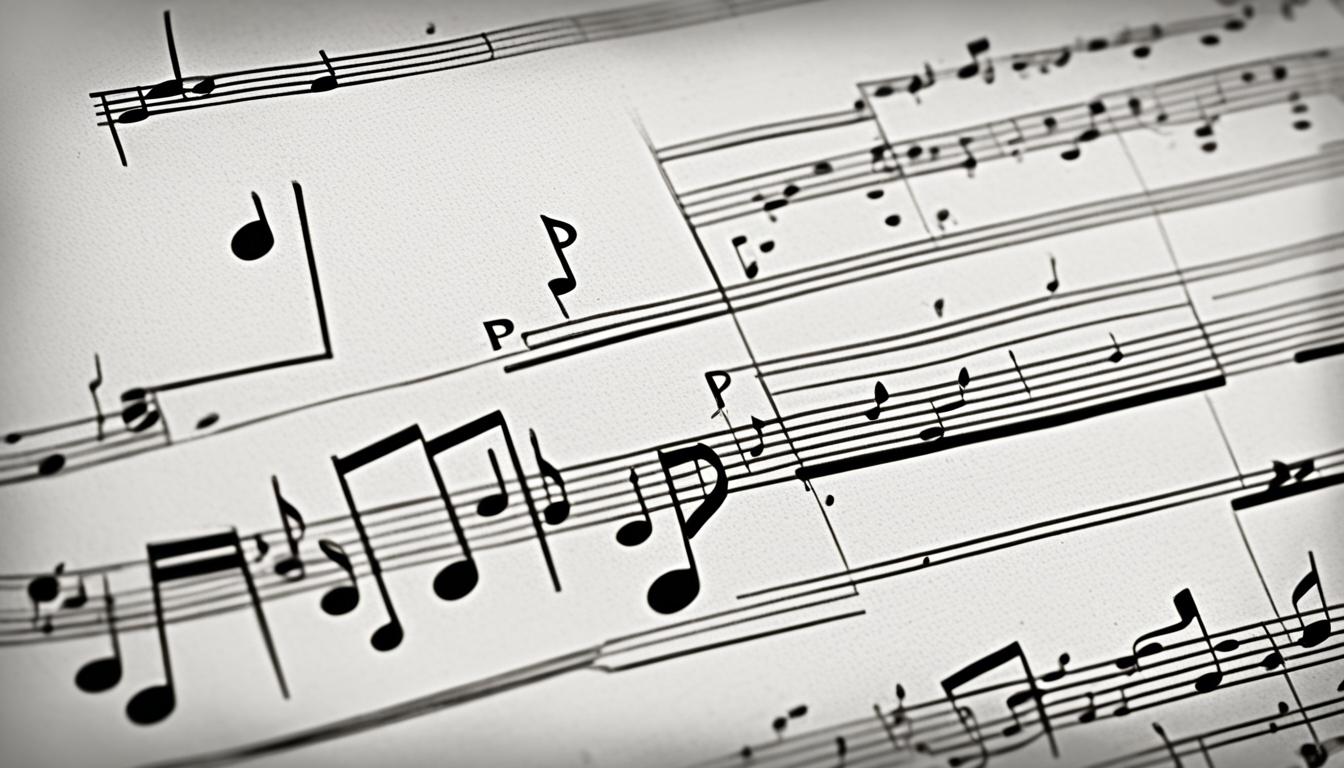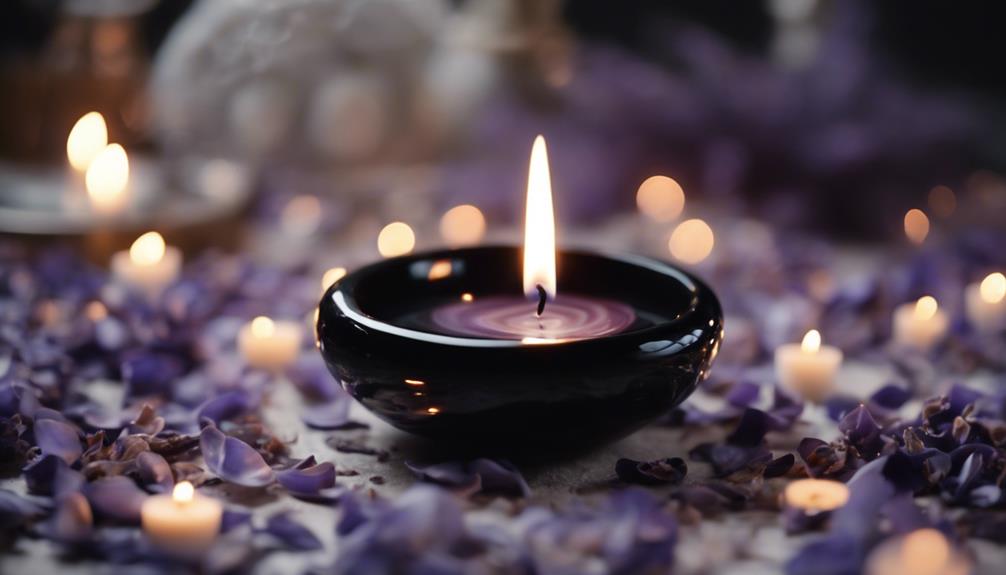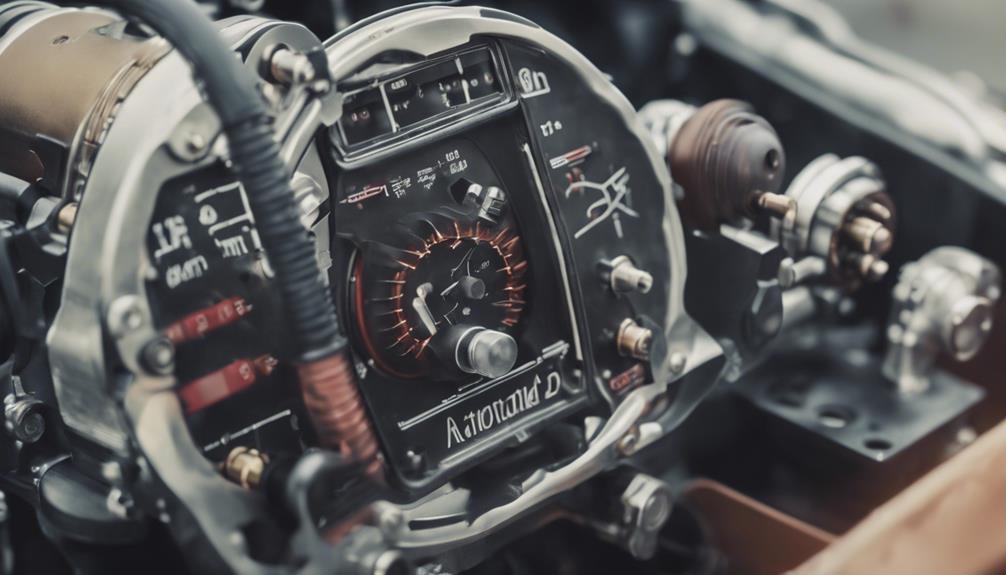Ever thought how the way musicians read dynamics on sheet music shapes their performance? It’s fascinating! **Focusing on** small details like what “pp” means in sheet music can **dramatically change** the music’s feel and expression.
Key Takeaways:
- Sheet music dynamics refer to the variation in loudness between notes or phrases in a musical composition.
- “pp” stands for pianissimo and indicates that the music should be played very quietly.
- Understanding dynamic markings on sheet music is essential for musicians to create the desired emotional impact in their performances.
- The interpretation of dynamic markings is subjective and allows for individual expression.
- Famous musical compositions showcase the effective use of dynamics to evoke emotions in the listener.
The Role of Dynamics in Music
Dynamics play a significant role in music, serving as one of the expressive elements that bring variety and interest to a musical performance. They have the power to communicate specific emotional states and feelings, enhancing the overall impact of the music.
Dynamic markings are always relative, indicating the loudness level in comparison to other markings in the piece. For instance, “piano” (abbreviated as “p”) signifies a soft volume, while “forte” (abbreviated as “f”) represents a loud volume. These markings provide guidance to the performer on the desired loudness, creating a dynamic range that adds depth and dimension to the composition.
By manipulating dynamics, musicians are able to convey a wide range of emotions and moods in their performances. They can build suspense, evoke excitement, express tenderness, or create moments of intensity. The changes in volume bring life to the music, captivating the listener’s attention and allowing for a more immersive experience.
“Dynamics in music give us the ability to express ourselves, to shape the phrases, and to add depth and emotion to our performances.”
Dynamics are not limited to just playing softly or loudly. They also encompass subtler changes in volume, such as crescendo (gradually getting louder) or diminuendo (gradually getting softer). These dynamic changes shape the musical phrases, creating tension and release, and allowing for a heightened sense of expression.
Understanding pp in Sheet Music
In sheet music, the dynamic marking “pp” stands for pianissimo, which means very quiet. It is one of the softest dynamic markings and indicates that the music should be played with a very low volume. Pianissimo requires the performer to exhibit delicate control and precision, creating a subtle and restrained sound.
Pianissimo is quieter than “piano” (soft) and even softer than “mezzo-piano” (moderately quiet). It signifies a level of quietness that adds a sense of intimacy and vulnerability to the music. When interpreting pp in sheet music, pianists and other musicians must strive to produce a sound that resonates with the intended feeling and expression.
Definition of pp in Sheet Music
“The dynamic marking ‘pp’ in sheet music indicates that the music should be performed with a very low volume, almost whispered. It requires great control and finesse to convey the delicate and understated nature of the music.”
Let’s take a look at a visual representation of how the dynamic markings pp, piano, and mezzo-piano compare:
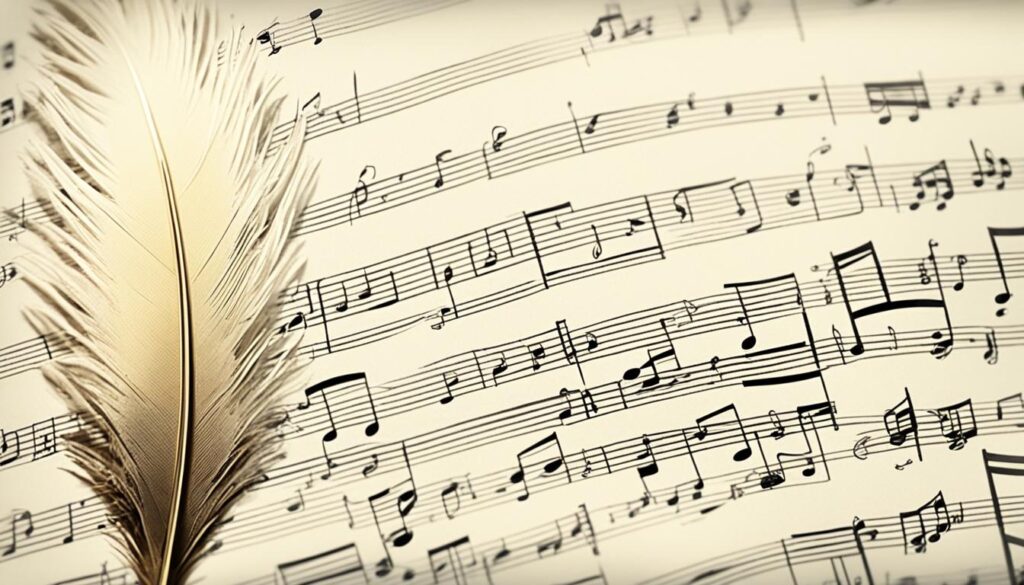
| Dynamic Marking | Description |
|---|---|
| pp | Very quiet |
| piano | Soft |
| mezzo-piano | Moderately quiet |
As shown in the table above, pp is the quietest of the three markings. It requires a gentle touch and careful control of the instrument to achieve the desired effect. Musicians must listen closely to the nuances of the music and adjust their playing accordingly to accurately portray the intended pp dynamics.
Interpreting pp in Sheet Music
When interpreting pp in sheet music, it is essential to understand the context of the piece and the emotions it conveys. Pianissimo is often used to create a sense of intimacy, introspection, or vulnerability. It can evoke feelings of serenity, fragility, or even a hushed intensity.
While the notation provides guidance, the interpretation of pp dynamics may vary depending on the performer’s artistic interpretation. Each musician may bring their own unique expression to pp markings, infusing the music with their individual style and sensitivity.
Here is an example of a musical excerpt with pp markings, showcasing the delicate and understated nature of these dynamics:
“Notes example”
By carefully executing the pp markings, performers can captivate their audience and create a captivating musical experience.
Other Dynamic Markings in Sheet Music
In addition to pp, there are various dynamic markings in sheet music that indicate different variations of loudness. These markings allow musicians to convey a range of dynamics, adding depth and expression to their performances.
- Fortissimo (ff) – Very loud
- Mezzo-forte (mf) – Moderately loud
- Mezzo-piano (mp) – Moderately quiet
- Piano (p) – Quiet
Each of these dynamic markings represents a different level of loudness, providing composers and performers with a way to shape the dynamics of a musical piece. By utilizing these variations in loudness, musicians can create a more nuanced and compelling interpretation of the music.
“Music is highly reliant on dynamics to convey emotions and create an immersive experience for the audience.” – Sarah, Musician, Rhythm Failure
Dynamic markings play a crucial role in determining the overall atmosphere and impact of a musical composition. For example, a sudden shift from fortissimo to piano can evoke a sense of tension and contrast, capturing the attention of the listener.
Understanding and interpreting dynamic markings is essential for musicians to convey a piece’s intended emotions and energy accurately. It requires a careful balance of technical control and artistic expression.
Comparing Dynamic Markings
To better illustrate the variations in loudness indicated by different dynamic markings, let’s compare them in the table below:
| Dynamic Marking | Symbol | Description |
|---|---|---|
| Fortissimo | ff | Very loud |
| Mezzo-forte | mf | Moderately loud |
| Mezzo-piano | mp | Moderately quiet |
| Piano | p | Quiet |
As seen in the table, each dynamic marking represents a distinct level of loudness, providing musicians with a clear guide on how to perform a particular passage.
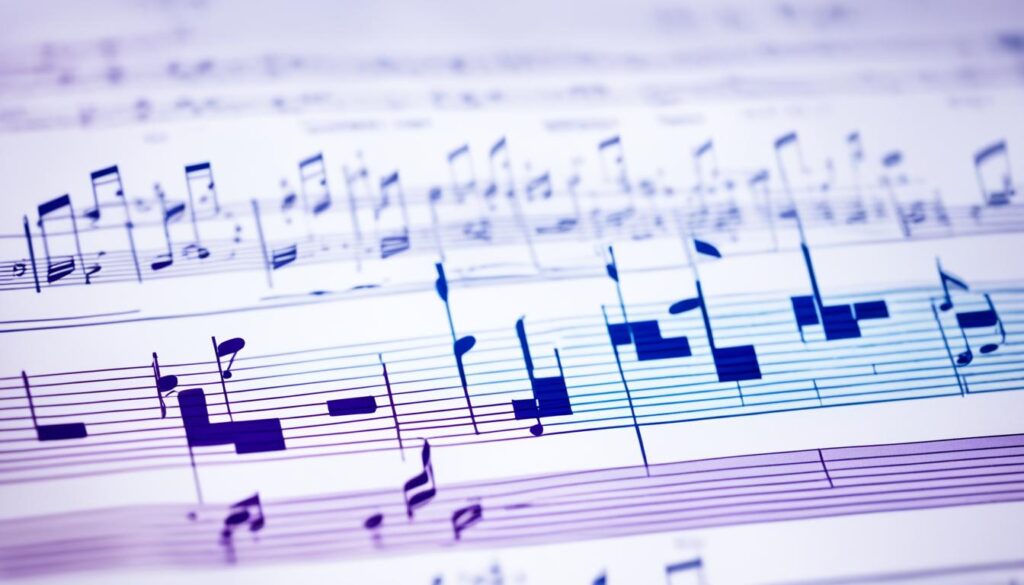
The visual representation of dynamic markings in the image above allows musicians to quickly distinguish between different variations of loudness, enriching their understanding and interpretation of the music.
Changes in Dynamics
Dynamic changes in music play a crucial role in creating a captivating and emotionally expressive performance. Through symbols or words, these changes indicate a gradual increase or decrease in volume, allowing the music to shape and evolve dynamically.
One common dynamic change is the crescendo, symbolized by “
On the other hand, a diminuendo, symbolized by “>”, signifies a gradual decrease in volume. As the sound becomes softer, the tension is released, allowing for a gentle and peaceful transition. The diminuendo adds a sense of resolution or closure to a musical phrase, creating contrast and variety in the overall performance.
These changes in dynamics serve to shape the musical phrases, imparting a sense of direction and purpose. It is through these variations in loudness that the performer can convey a range of emotions and evoke a deeper connection with the audience.
“The ability to expertly execute changes in dynamics is what sets a skilled musician apart. It allows us to breathe life into the music, taking the listener on a journey of emotional highs and lows.” – John Williams, Renowned Composer and Conductor
As a performer, it is essential to pay attention to the nuances of the dynamic changes indicated in the sheet music. Through careful interpretation and execution, we can fully realize the composer’s intentions, highlighting the expressive and dramatic aspects of the music.
Let’s take a look at an example to further illustrate the impact of changes in dynamics:
The Power of Dynamic Changes: Beethoven’s Symphony No. 5
Beethoven’s Symphony No. 5 is a perfect example of the dramatic effect created by changes in dynamics. The iconic opening motif, consisting of four short notes followed by a powerful long note, is instantly recognizable.
Beethoven uses dynamic changes within this motif to build anticipation and tension. The initial notes are played softly, almost mysteriously, creating an aura of suspense. Then, the long note that follows explodes with intensity, emphasizing the shift from diminuendo to a sudden crescendo.
The contrast between the soft and loud sections creates a captivating and emotionally charged experience for both the performer and the audience. It is through these changes in dynamics that Beethoven’s Symphony No. 5 continues to resonate with listeners, evoking a range of emotions, from triumph to introspection.
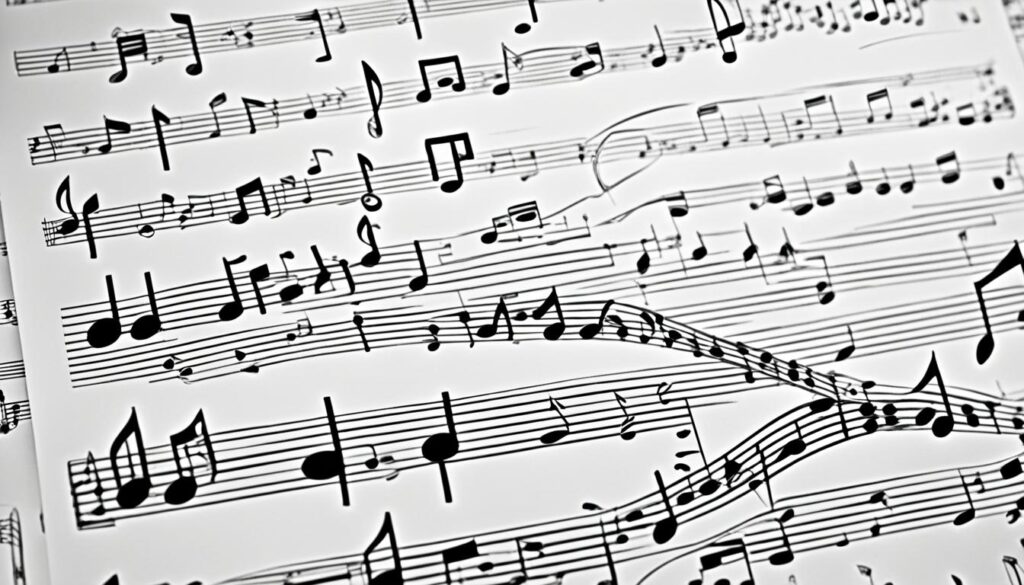
By mastering the art of effectively executing changes in dynamics, we can elevate our performances and truly bring the music to life. It is through these dynamic variations that we can create evocative musical experiences that resonate with our listeners.
Extreme Dynamic Markings
In some musical compositions, extreme dynamic markings are used to create powerful contrasts and enhance the emotional impact of the music. These markings indicate a very large dynamic range, ranging from very loud to very quiet. By utilizing extreme dynamic markings, composers add emphasis and drama to their compositions, creating intense or delicate moments that captivate the listener.
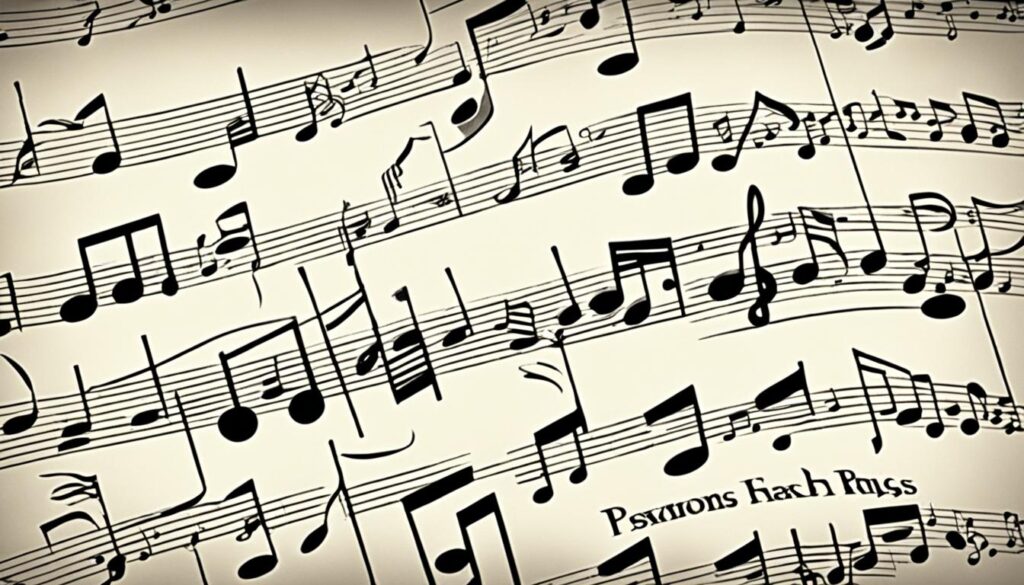
One example of an extreme dynamic marking is “ffff” which stands for fortississimo. This notation instructs the performer to play the music very, very loudly, creating a bold and intense sound. It is often used to emphasize climactic moments in a piece and to evoke a sense of grandeur and power.
On the other end of the dynamic spectrum, we have “pppp” which stands for pianississimo. This notation indicates that the music should be played very, very quietly. It requires great control and precision from the performer to create a gentle and delicate sound. Pianississimo is often used to create a sense of intimacy and vulnerability in a musical passage.
“The extreme dynamic markings of fortississimo and pianississimo allow composers to explore the full range of musical expression, from intense and powerful to delicate and intimate.” – Renowned composer, J.S. Bach
These extreme dynamic markings serve as powerful tools for composers and performers to convey emotions, create tension, and guide the emotional journey of the listener. By skillfully navigating through the contrasts provided by extreme dynamic markings, musicians bring the music to life and elicit a visceral response from the audience.
Example of Extreme Dynamic Markings in Music
To provide a concrete example, let’s examine Beethoven’s Symphony No. 5. The first movement of this symphony is known for its powerful and iconic opening motif, consisting of four short notes followed by a long note. Beethoven notates this motif with the extreme dynamic marking “ffff” to emphasize its dramatic impact. The sudden shift from silence to thundering fortississimo grabs the attention of the listener and sets the tone for the entire piece.
In contrast, the third movement of the same symphony features a tranquil and lyrical melody. Beethoven notates this melody with the extreme dynamic marking “pppp,” allowing the delicate and intimate qualities of the music to shine through. The quiet whispers of the music create a serene and introspective atmosphere, captivating the listener with its subtlety.
| Dynamic Marking | Description |
|---|---|
| ffff | Fortississimo – Very, very loud |
| pppp | Pianississimo – Very, very quiet |
By using extreme dynamic markings, composers like Beethoven challenge performers to push the boundaries of loudness and softness in their interpretations. These markings demand a high level of technical control and artistic expression, allowing musicians to convey the full spectrum of human emotions through their performances.
Historical Perspective on Dynamics
The use of dynamics in music has evolved over time. In ancient Greek music, dynamic transitions were indicated, although not as explicitly as rhythm or harmony. The Greeks believed that music had the power to convey emotions and influence the human psyche. However, their musical notation did not specifically delineate different levels of loudness or softness.
It was during the Renaissance period that composers began to indicate dynamics in notation. One notable composer, Giovanni Gabrieli, was among the first to experiment with different dynamic levels in his compositions. This marked a significant milestone in the development of music notation as it allowed performers to better understand the intended expressiveness of a piece.
“The introduction of dynamic markings revolutionized the way music was interpreted and performed. Composers could now convey specific emotions and moods through variations in loudness or softness.” Thorsten Meyer
The Baroque era further expanded the use of dynamics in music. Practices like raddoppio and ripieno allowed for a more nuanced manipulation of volume within an ensemble. Composers such as Johann Sebastian Bach and George Frideric Handel utilized these techniques to create powerful musical contrasts and enhance the emotional impact of their compositions.
In modern times, dynamics play a vital role in musical interpretation and expression. Performers use dynamic markings to shape phrases, create tension, and convey emotions. Whether it’s the thunderous crescendo of a symphony or the delicate pianissimo of a solo piano piece, dynamics add depth and richness to the musical experience.
The Evolution of Dynamics in Ancient Greek Music
Although ancient Greek music did not have explicit dynamic markings like those found in modern notation, it still acknowledged the importance of variations in loudness. The Greeks used different terms to describe dynamic transitions, such as “sudatei,” meaning “grow louder,” and “meizon” for “greater volume.” These indications relied on the performer’s understanding of the musical context to adjust their playing accordingly.
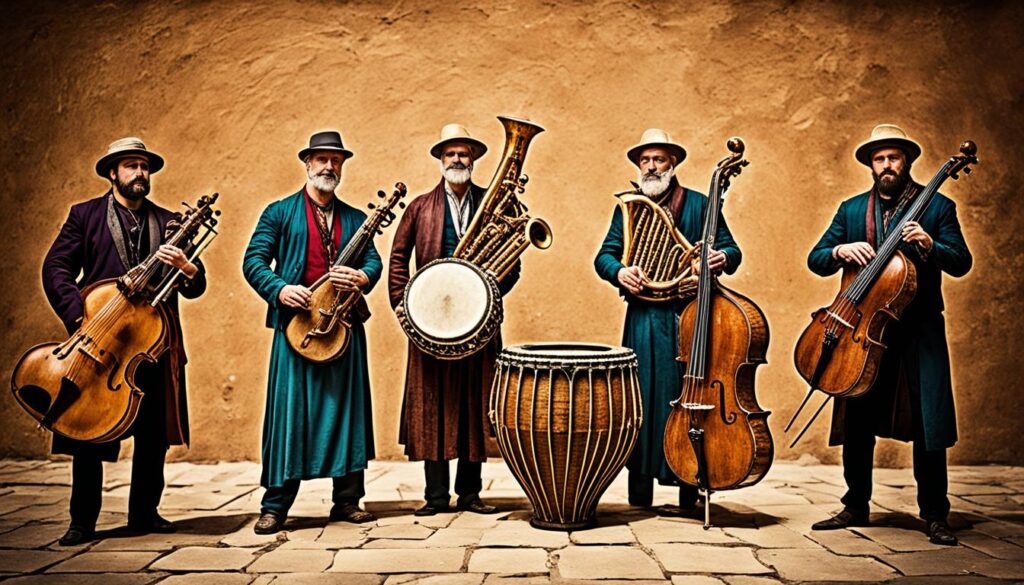
Dynamics in Different Instruments
When it comes to dynamics in music, it’s important to consider the unique characteristics of each instrument. Dynamics can vary significantly depending on the instrument being played, as some are naturally louder than others. Understanding the natural loudness of instruments and adapting our dynamics accordingly is crucial for a balanced and cohesive performance.
For example, let’s compare the tuba and the guitar. The tuba is a brass instrument with a large size and a low pitch range. Due to its physical characteristics, the tuba naturally produces a louder sound compared to the guitar, which is a string instrument with a smaller size and a higher pitch range.
When playing the same dynamic marking, such as mezzo-piano, the tuba playing mezzo-piano will likely be louder than the guitar playing the same dynamic level. The performer should take into consideration this difference in natural loudness to maintain a balanced sound among the different instruments in an ensemble or performance.
It is also worth noting that instruments have their limitations regarding how loud or quiet they can play. The physical design and construction of an instrument influence its dynamic capabilities. For instance, brass instruments like the trumpet and trombone can produce louder sounds than woodwind instruments like the flute or clarinet.
When musicians interpret sheet music, they must adapt their dynamics to each instrument’s unique qualities. This involves understanding the instrument’s natural loudness and making adjustments as necessary to achieve the desired balance and expression.
Dynamic Characteristics of Different Instruments
| Instrument | Natural Loudness | Dynamic Range |
|---|---|---|
| Tuba | Loud | Wide |
| Guitar | Quiet | Narrow |
| Trumpet | Loud | Wide |
| Flute | Quiet | Narrow |
Instruments with a wider dynamic range, such as the tuba and trumpet, have the ability to play both very loud and very quiet. On the other hand, instruments with a narrower dynamic range, like the guitar and flute, have less flexibility in terms of loudness variation.
By understanding the dynamics in different instruments and their natural loudness, musicians can make informed decisions about how to shape their performances, creating a balanced and expressive musical experience.
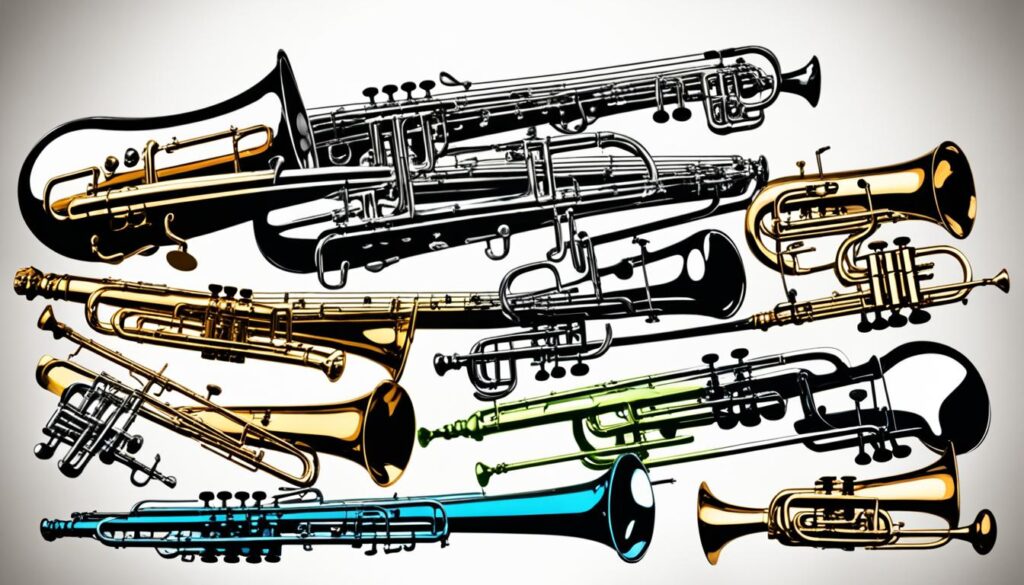
Interpreting Dynamics: Performer’s Discretion
When it comes to interpreting dynamics in music, there is an inherent subjectivity that relies on the performer’s discretion. While dynamic markings provide a general guideline for loudness, the exact interpretation can vary between performers and musical genres. This gives musicians the freedom to add their personal touch to the music and allows for individual expression.
The performer’s discretion in interpreting dynamics is influenced by a variety of factors, including their musical background, artistic sensibilities, and the emotional intent of the piece. This means that two performers playing the same piece of music may have different interpretations when it comes to dynamics, even when following the same written markings.
For example, the dynamic marking “forte” may indicate a loud volume in classical music, but in the context of heavy metal music, it could mean a much greater volume. This highlights the importance of understanding the musical genre and context when interpreting dynamics.
Furthermore, dynamics can be influenced by the specific instrument being played. Each instrument has its natural loudness capabilities, and performers must consider this when interpreting dynamics. For instance, a pianissimo passage played on a trumpet will inherently sound louder than the same passage played on a flute due to the differences in the instruments’ natural volume ranges.
“The interpretation of dynamics in music is a creative process that allows performers to infuse their own artistic choices. While we follow the general guidelines provided by the dynamic markings, it is our discretion that brings the music to life and makes it unique.”
Interpreting dynamics in music is a constant dialogue between the performer and the composer. It requires a deep understanding of the music’s structure, emotional intent, and historical context. Performers must balance their individual artistic expression with honoring the composer’s intentions.
By embracing this freedom of interpretation, performers can create a dynamic and captivating musical experience that resonates with the audience. The nuances in dynamics help shape the narrative of the music, conveying emotions and evoking a range of feelings.
A well-executed interpretation of dynamics can elevate a musical performance, transporting listeners to a world of intensity or tranquility, depending on the composer’s vision. The performer’s discretion plays a crucial role in bringing out the true essence of the music and fostering a powerful connection between the performer, the music, and the audience.

Famous Musicians: The Art of Dynamic Interpretation
Throughout history, many legendary musicians have showcased their expertise in interpreting dynamics, leaving a lasting impact on their audiences. From Ludwig van Beethoven’s dramatic use of dynamics in his symphonies to Miles Davis’ mastery of dynamics in jazz improvisations, these musicians have pushed the boundaries of expressive possibilities.
Here are a few examples of renowned musicians known for their exceptional interpretations of dynamics:
- Frederic Chopin – Known for his delicate pianissimo passages that capture profound emotions.
- Luciano Pavarotti – His powerful fortissimo notes brought operatic arias to life.
- Jimi Hendrix – Revolutionized guitar playing with his dynamic range, from soft, melodic passages to blistering loud solos.
These musicians demonstrate the impact that a well-executed interpretation of dynamics can have on a musical performance, leaving a lasting legacy that continues to inspire performers to this day.
Examples of Dynamics in Music
When it comes to showcasing the effective use of dynamics in music, numerous famous compositions stand out. These pieces highlight the immense impact dynamics can have on evoking emotions in the listener, creating tension, suspense, and adding depth to musical performances.
Jaws Theme by John Williams
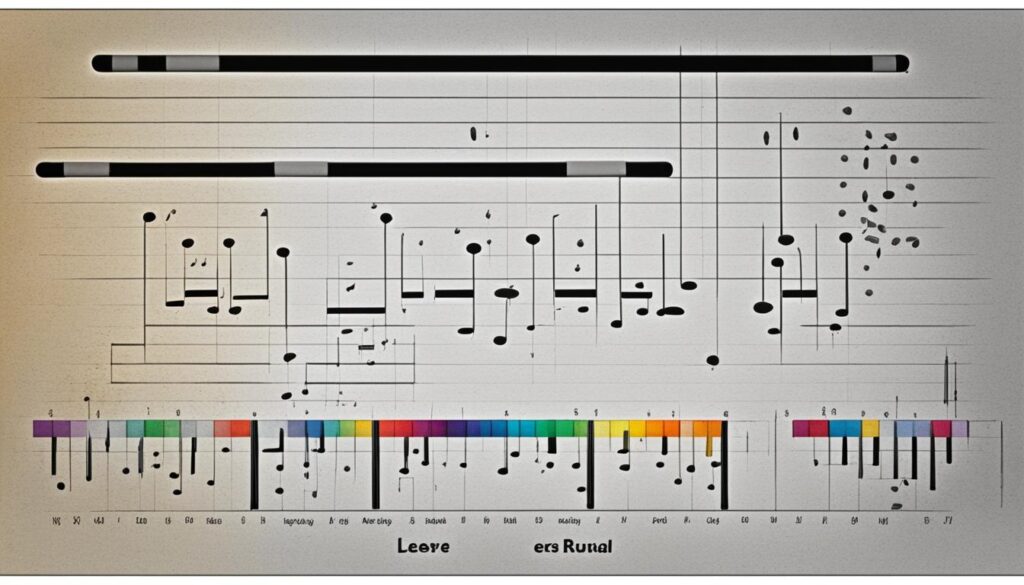
One remarkable example is the theme from the iconic movie Jaws composed by John Williams. This composition masterfully utilizes dynamic contrast and accents to create a sense of impending danger and build suspense. Through the careful manipulation of loud and soft moments, the music effectively captures the intensity and anticipation that is synonymous with the film.
Gustav Mahler’s Seventh Symphony
Gustav Mahler, known for his passionate and symphonic compositions, incorporates extreme dynamic markings in his Seventh Symphony. This incredible piece showcases a wide range of dynamics, from delicate pianissimo passages to intense fortissimo sections. The contrasting dynamics heighten the emotional impact of the music, creating an immersive and captivating listening experience.
Sergei Rachmaninoff’s Prelude in C♯ minor
Another notable example is Sergei Rachmaninoff’s Prelude in C♯ minor. This composition features sffff markings, indicating an incredibly quiet and delicate passage. The extreme pianississimo dynamics in this piece demand precision and control from the performer, setting a mesmerizing atmosphere of mystery and intimacy.
These examples demonstrate the power of dynamics in music and how they can effectively convey emotions, create tension, and captivate the listener. Through strategic use of dynamic markings, composers can evoke a wide range of emotional responses and enhance the overall musical experience.
By studying and analyzing these compositions, musicians can gain a deeper understanding of the diverse ways in which dynamics can be utilized to convey musical expression.
Conclusion
In conclusion, dynamics are a crucial component of sheet music that allows musicians to bring their performances to life. By understanding and interpreting dynamic markings, such as pp, musicians can add variety, expression, and emotional impact to their music. Adjusting the loudness levels with precision allows performers to captivate their audience and evoke the intended emotions.
Sheet music dynamics provide a roadmap for musicians to navigate through musical phrases and create tension and release. Whether it’s a gradual crescendo or a sudden fortissimo, dynamics help shape the musical narrative and convey the composer’s intentions.
By mastering the understanding and execution of dynamic markings, musicians can showcase their artistry and deliver truly engaging performances. Through the careful control of volume, they can breathe life into sheet music and connect with their audience on a deep emotional level. Dynamics in sheet music are a powerful tool that allows musicians to express themselves and make a lasting impact.
FAQ
What does “pp” mean on sheet music in dynamics?
What are dynamics in music and their role?
How do I understand “pp” in sheet music?
Are there other dynamic markings in sheet music?
How do dynamics change in music?
Are there extreme dynamic markings in sheet music?
How have dynamics evolved in music?
Do dynamics vary depending on the instrument?
How are dynamics interpreted in music?
Can you give examples of dynamics in famous musical compositions?
What is the role of dynamics in sheet music?
What Does “pp” Mean in Sheet Music Dynamics and How Does it Compare to 14k GS Jewelry Markings?
In sheet music dynamics, “pp” stands for “pianissimo,” indicating very soft playing. This marking instructs musicians to play the passage with the utmost delicacy and restraint. On the other hand, understanding 14k GS jewelry markings means knowing that the “GS” stands for “gold filled, gold shell, or gold plated.

